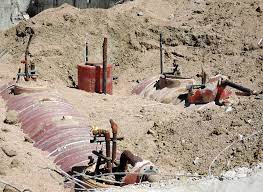The conversion processes of the biological origins of the crude oil have ensured that the majority of the components have been extensively converted into organic compound (majorly hydrocarbon). Moreover, biomarkers are generally minor components of a crude oil or rock extract.
Therefore, highly selective and sensitive methods of analysis employing gas chromatography – mass spectrometry (GC-MS) are necessary for their measurement. Gas chromatography (GC) is being used for biomarker analysis, particularly for n-alkanes, branched alkanes and acyclic isoprenoid hydrocarbons.
The individual biomarkers are much low in abundance (concentrations ranging from 1 to 500 ppm) compared to fractions such as the regular paraffin and aromatics but they are some of the most abundant structurally defined compounds used in tagging petroleum.
Typically a crude petroleum sample is separated into a saturate and aromatic fraction during the sample preparation stage prior to biomarker analysis and then both fractions are analyzed independently.
Read Also : Petroleum Transformation Process
The most common GC analysis method is the GC-MS alternative because of the need for structural elucidation and comparison. In the transformation process, the biomarkers are in different isomers and the separation of individual isomers is achieved in the capillary columns of the GC with nonpolar stationary phases which is sufficient to resolve many of the biomarkers of interest.
The separation into saturate and aromatics in the sample preparation stage provides the desired greater resolution, reduces the effects of interference and allows for the determination of biomarker concentrations down to the low ppm and ppb levels.
It is typical for a single biomarker analysis to monitor several hundred biomarkers. Thus, mass spectrometer (MS) is most useful for the detection, providing a molecular “fingerprints” from the ionization and fragmentation of the biomarker into their characteristic fragmentation pattern.
That helps to better and selectively identify the eluted biomarker compounds. The MS uses Electron impact (typically 70 ev) as the most common ioniziation technique.
When available, a tandem mass spectrometry technique (GC-MS/MS) is used to analyze and distinguish biomarkers further because of its additional selectivity which is essential when resolving more complex biomarker distributions.

